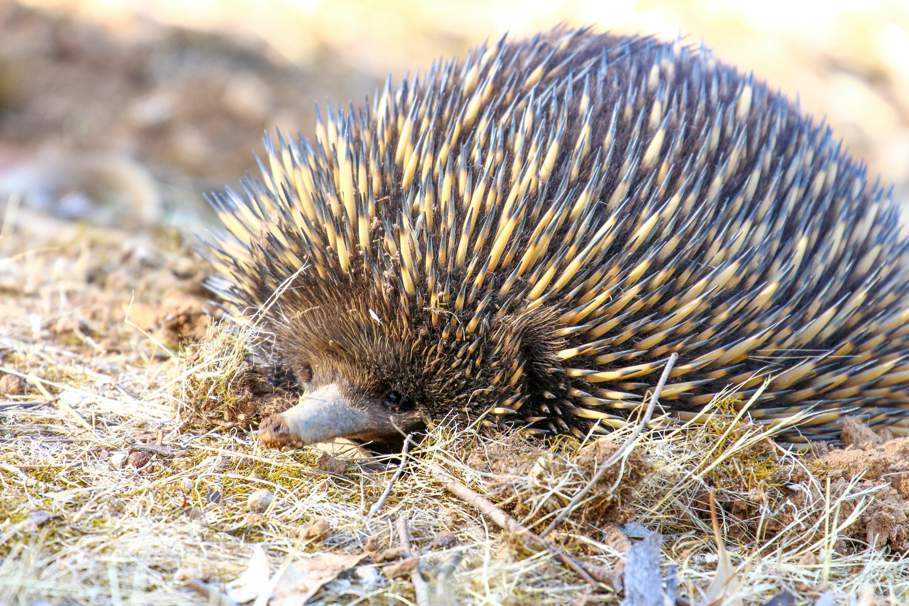The Short-beaked Echidna is the Catchment Critter of the Month as part of the Goulburn Broken Catchment Management Authority’s (CMA) Our Catchments Our Communities Taking Care of Country project, funded by the Victorian Government.
Goulburn Broken CMA project officer, Janice Mentiplay-Smith, said the Short-beaked Echidna (Tachyglossus aculeatus), belonged to a very select branch of the mammalian family tree – it’s classified as a monotreme, an egg-laying mammal, along with the platypus.
“Nature is quite amazing,” Ms Mentiplay-Smith said. “The Echidna’s unique style of reproduction means the female lays a single egg, normally associated with birds and reptiles and incubates it in her pouch, which we associate with marsupials. After just 10 days the echidna’s small leathery egg hatches to reveal a jellybean-sized baby called a puggle.
“From inside its mother's pouch, the puggle feeds on fatty milk for two or three months, until its spines become too sharp. The mother then leaves her tiny puggle in a purpose-built burrow and will feed it until weaned at around six months of age.
“The Echidna is somewhat of a loner; a solitary creature that roams across large, overlapping home ranges of up to 50 hectares. Only when the female is raising her puggle in a burrow does the Echidna remain in one area for a length of time.”
The Echidna feeds on termites, ants, and other insects. It uses its sticky 17-centimetre-long tongue to scoop up the scurrying ‘moving feasts’ - along with a good measure of gravel and soil. Its strong, rigid snout is adept at breaking open rotting logs and termite mounds and its short limbs and shovel-like claws are purpose built for digging, burrowing and climbing along logs and fallen branches. Like the platypus, the male Short-beaked Echidna has a spur on each hind leg, however unlike the platypus, it is non-venomous.
Thanks to its body armour, the Echidna has few natural predators. When threatened, it will curl into a ball and tightly wedge itself into a crevice to expose its threatening spines. The Echidna is a competent swimmer and will traverse bodies of water, using its little snout as a snorkel. Keeping shallow bowls of water in your garden can help these spikey visitors cool off during times of extreme heat.
“Echidnas are self-contained little critters that we unfortunately take for granted in our landscape. They do a fantastic job aerating and turning the soil and promoting nutrient recycling in their endless search for an ant dinner. As with much of Australia’s wildlife, road traffic is a major danger for Echidnas, so it is important to remain vigilant on the roads. An echidna’s sharp spines are not friendly towards car tyres either; another good reason to drive with wildlife in mind.
Read more about the Short-beaked Echidna and other mammal species in the Goulburn Broken catchment in The Mammal Book, a 58-page booklet featuring beautiful photographs and informative text. The Mammal Book - GB CMA - Goulburn Broken CMA

Short-beaked Echidna. Photo: Shellie Drysdale